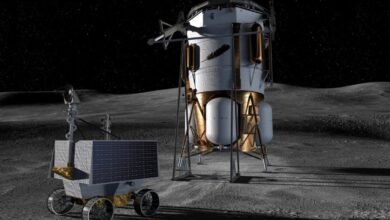The Odds of Recovering New Glenn’s Second Launch

▼ Summary
– Blue Origin rolled out the New Glenn rocket’s first stage to begin final preparations for its second launch, which will carry two Mars-bound spacecraft.
– The company did not announce a launch date publicly, but sources indicate a target window of November 9-11, pending successful pre-launch tests.
– This mission, named ESCAPADE, aims to deploy two identical spacecraft into orbit to study solar wind at Mars.
– Blue Origin plans to recover and reuse the booster, named “Never Tell Me The Odds,” with internal confidence in a 75% chance of successful landing on the drone ship Jacklyn.
– The first launch in January lost the first stage due to propulsion issues, limiting testing of atmospheric flight control and landing software critical for touchdown.
Blue Origin has advanced the first stage of its powerful New Glenn rocket to the launch pad in Florida, marking a critical step toward its second mission. This rollout signals the final preparations are underway, though the company has not yet confirmed an official launch date for the flight, which will carry two small spacecraft, the ESCAPADE mission, designed to study solar wind around Mars. According to industry sources, Blue Origin is currently aiming for a launch window between November 9 and November 11, provided all pre-launch procedures, including a crucial static-fire test, proceed without issues.
The booster for this mission, whimsically named “Never Tell Me The Odds,” carries significant expectations for recovery and reuse. Despite the lighthearted moniker, Blue Origin’s internal projections suggest a strong likelihood of success. Company engineers reportedly estimate around a 75 percent chance of landing the first stage safely on the drone ship Jacklyn.
That confidence, however, may appear optimistic from an external viewpoint. During New Glenn’s inaugural flight in January, the first stage was lost after successfully delivering its payload to orbit. Blue Origin has shared limited information about the propulsion problems that prevented the booster from reaching the recovery zone. Since the initial flight did not test key elements of atmospheric control or landing stabilization, many critical software and guidance systems remain unproven in real conditions. Successfully executing the complex sequence required for a soft touchdown involves numerous interdependent systems, each needing to perform flawlessly during the rocket’s return.
(Source: Ars Technica)




